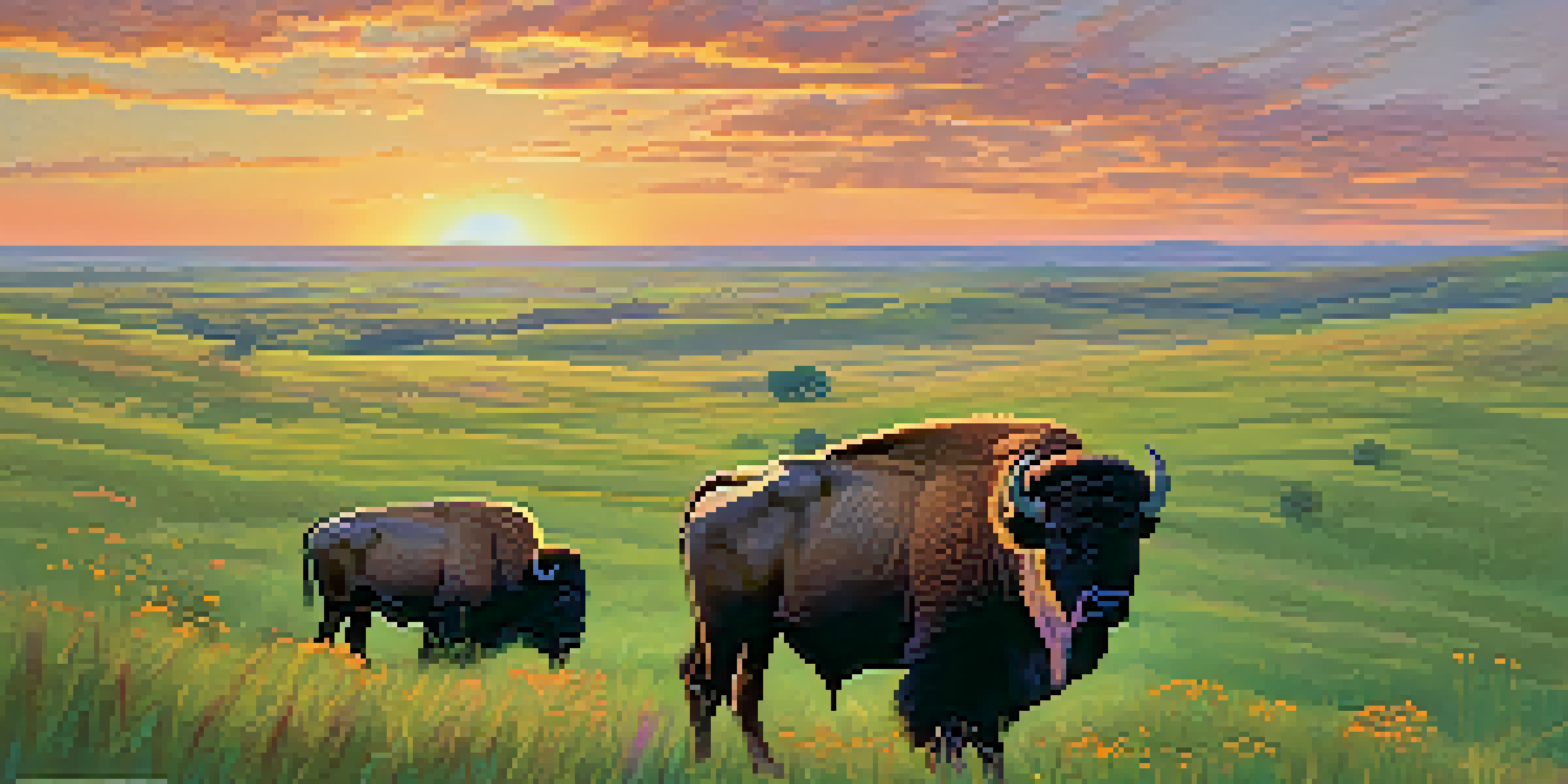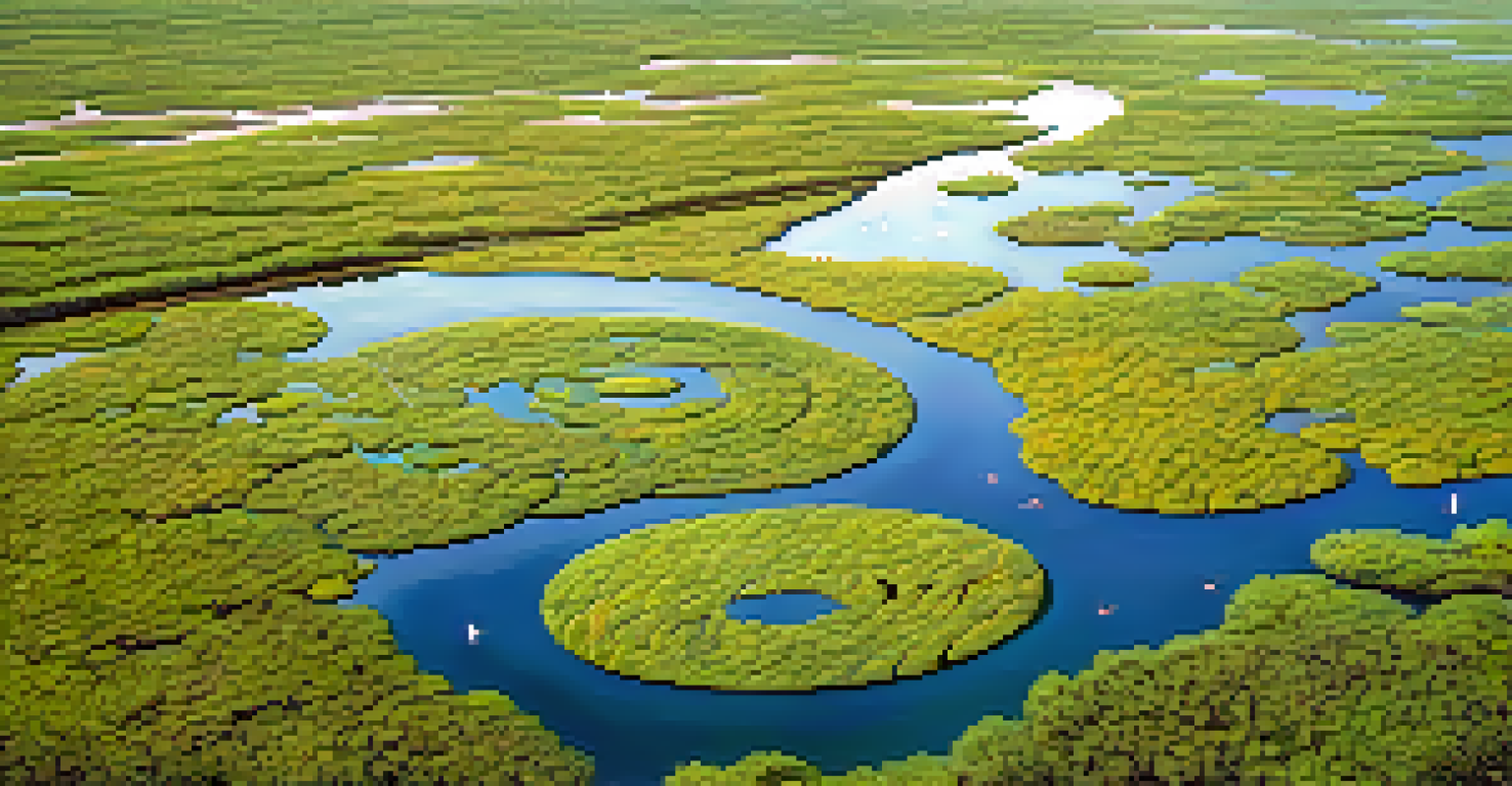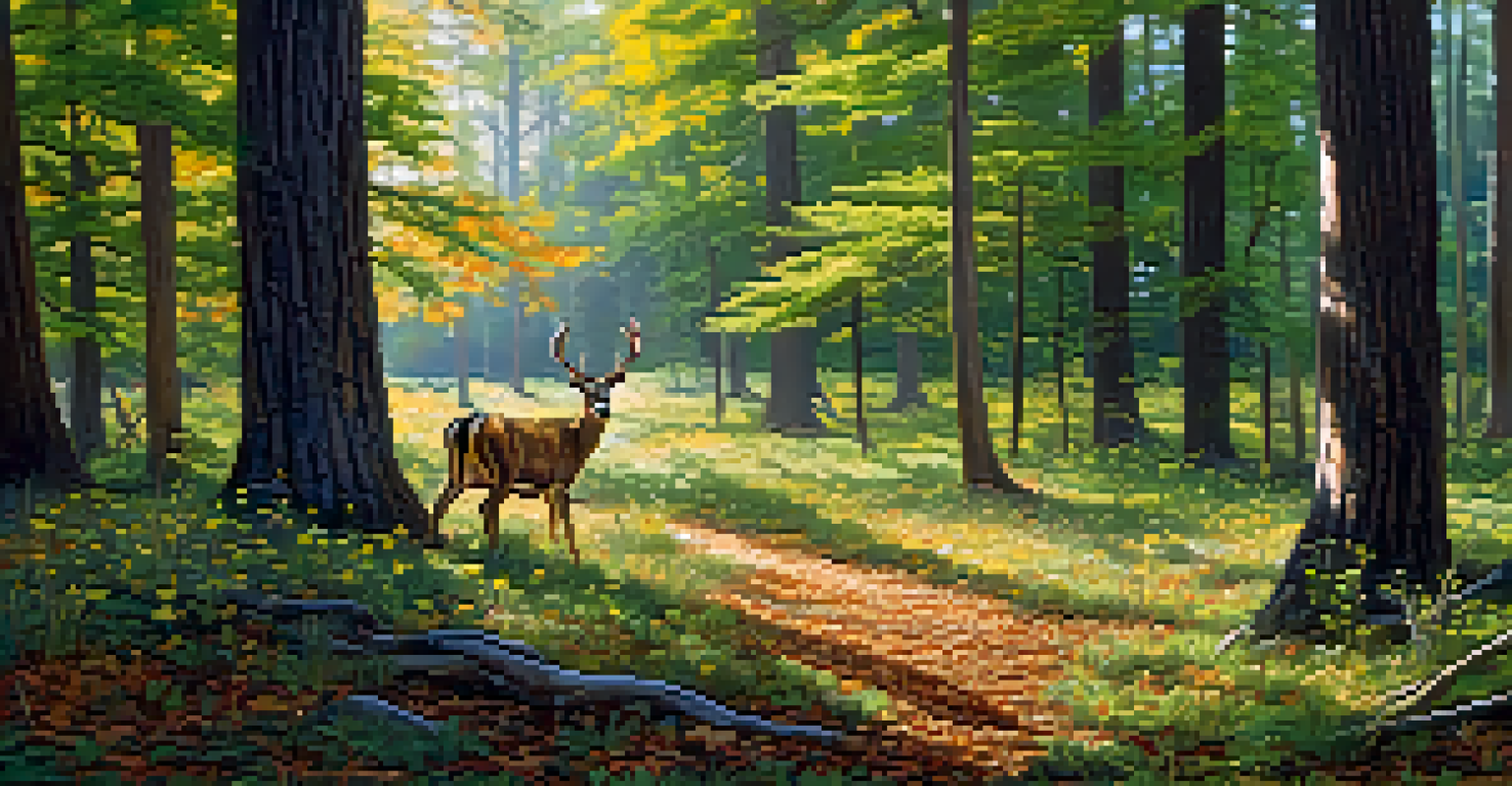The Role of Geography in Kansas Wildlife Habitats

Overview of Kansas Geography and Its Features
Kansas is a landlocked state located in the heart of the United States, characterized by its vast plains and rolling hills. The geography of Kansas includes prairies, woodlands, rivers, and wetlands, creating a variety of ecosystems. This diverse landscape plays a crucial role in supporting a wide range of wildlife species, each adapted to their specific habitats.
The environment is where we all meet; where we all have a mutual interest; it is the one thing all of us share.
From the Flint Hills in the east, known for their tallgrass prairies, to the Smoky Hills in the north, the state has unique geographical features that influence the distribution of animal and plant life. The difference in elevation, soil types, and moisture levels across the state contributes to the rich biodiversity found in these areas. Understanding these geographic features is essential for appreciating the habitats that wildlife call home.
Additionally, the state's central location makes it a vital corridor for migratory birds, connecting northern breeding grounds with southern wintering areas. This geographical significance highlights the importance of Kansas as a key player in the larger ecological landscape of North America.
Grasslands and Their Role in Wildlife Habitats
The grasslands of Kansas, particularly the tallgrass prairies, are home to a variety of wildlife species. These open spaces provide essential resources such as food, shelter, and nesting sites for birds, mammals, and insects. Species like the prairie dog and the American bison rely on these grasslands for their survival, making them integral to the ecosystem.

Grasslands also play a significant role in maintaining the health of the environment. They help prevent soil erosion, improve water quality, and sequester carbon, contributing to climate stability. The interconnectedness of these grassland habitats supports not only local wildlife but also the overall health of the ecosystem.
Kansas' Diverse Wildlife Habitats
Kansas features a rich variety of ecosystems, including grasslands, forests, and wetlands, each supporting unique wildlife populations.
However, these habitats face threats from agricultural expansion and urban development. Conservation efforts aimed at preserving grasslands are crucial for maintaining the diverse wildlife populations that depend on these unique environments.
Forested Areas and Their Biodiversity
In contrast to the extensive grasslands, Kansas also boasts pockets of forested areas that play a vital role in supporting wildlife. These woodlands provide shade, shelter, and nesting sites for various species, including deer, raccoons, and numerous bird species. The biodiversity found in these areas enhances the overall ecological balance.
What we are doing to the forests of the world is but a mirror reflection of what we are doing to ourselves and to one another.
Forested habitats also contribute significantly to the state's water systems. Trees help regulate water cycles by absorbing rainfall and releasing moisture, which is crucial for surrounding ecosystems. This process creates a microclimate that supports a unique array of flora and fauna.
Despite their importance, forested areas in Kansas are often overlooked and face pressures from logging and land conversion. Protecting and restoring these habitats is essential for preserving the wildlife that thrives within them.
Wetlands: Critical Habitats for Wildlife
Wetlands in Kansas, including marshes and swamps, are crucial habitats for a variety of wildlife species. These areas are rich in nutrients and serve as breeding grounds for amphibians, fish, and bird populations. The diverse plant life found in wetlands provides food and shelter, making them vital ecosystems.
Wetlands also play an important role in maintaining water quality and controlling flooding. They act as natural filters, trapping pollutants and sediments, which helps protect downstream ecosystems. This function is essential not only for wildlife but also for human communities that rely on clean water sources.
Conservation is Crucial for Stability
Effective conservation efforts are essential to protect Kansas's wildlife habitats from threats posed by human activity and climate change.
However, wetlands face significant threats from drainage and development. Conservation efforts focused on protecting and restoring these vital habitats are necessary to ensure the survival of the diverse species that inhabit them.
The Influence of Climate on Wildlife Habitats
The climate in Kansas, characterized by hot summers and cold winters, significantly influences the state's wildlife habitats. Seasonal changes affect the availability of food and water, which in turn impacts animal behavior and migration patterns. For example, many bird species migrate south during winter to find more favorable conditions.
Moreover, climate variations can lead to changes in plant communities, which directly affects the food sources available to herbivores and, consequently, the predators that rely on them. Understanding these climatic influences is crucial for wildlife management and conservation strategies.
As climate change continues to impact weather patterns, the habitats in Kansas may face unprecedented challenges. Adapting conservation efforts to accommodate these changes will be essential for protecting the state's wildlife.
Human Impact on Kansas Wildlife Habitats
Human activity has a profound impact on wildlife habitats in Kansas, often leading to habitat loss and fragmentation. Urban development, agriculture, and infrastructure projects can disrupt the natural balance of ecosystems, making it challenging for wildlife to thrive. For instance, road construction can isolate animal populations, hindering their movement and breeding.
Additionally, pollution from agricultural runoff and industrial sources can degrade water quality and harm wildlife health. Species that rely on clean water and healthy habitats are particularly vulnerable to these changes. Awareness of these impacts is crucial for developing effective conservation strategies.
Climate Change Affects Wildlife
The changing climate significantly influences wildlife behavior and habitats in Kansas, necessitating adaptive conservation strategies.
Efforts to mitigate human impact include creating wildlife corridors, restoring habitats, and promoting sustainable land use practices. By prioritizing conservation, we can work towards a more harmonious coexistence between humans and wildlife.
Conservation Efforts in Kansas
Conservation initiatives in Kansas aim to protect and restore the state's diverse wildlife habitats. Organizations and government agencies work together to implement strategies that focus on habitat preservation, species recovery, and public education. These efforts are essential for maintaining the ecological balance and ensuring the survival of native species.
Programs such as the Kansas Department of Wildlife and Parks promote sustainable practices and encourage community involvement in conservation. By engaging local residents in habitat restoration projects, these initiatives foster a sense of stewardship and responsibility towards the environment.

Furthermore, collaboration with agricultural stakeholders is vital for finding solutions that benefit both wildlife and farming communities. By adopting practices that support biodiversity, we can create a healthier ecosystem for all.
The Future of Wildlife Habitats in Kansas
Looking ahead, the future of wildlife habitats in Kansas will depend on our collective efforts to address the challenges they face. Climate change, urbanization, and habitat destruction are pressing issues that require innovative solutions and strong partnerships. By prioritizing conservation and sustainable practices, we can work towards a more resilient ecological landscape.
Public awareness and education will be crucial in fostering a culture of conservation. By encouraging individuals to connect with nature and understand the importance of wildlife habitats, we can inspire action at the community level. Engaging younger generations is particularly vital for ensuring a sustainable future.
Ultimately, the health of Kansas's wildlife habitats is intertwined with the well-being of its residents. A thriving ecosystem benefits not only wildlife but also agricultural productivity, water quality, and overall quality of life for the community.